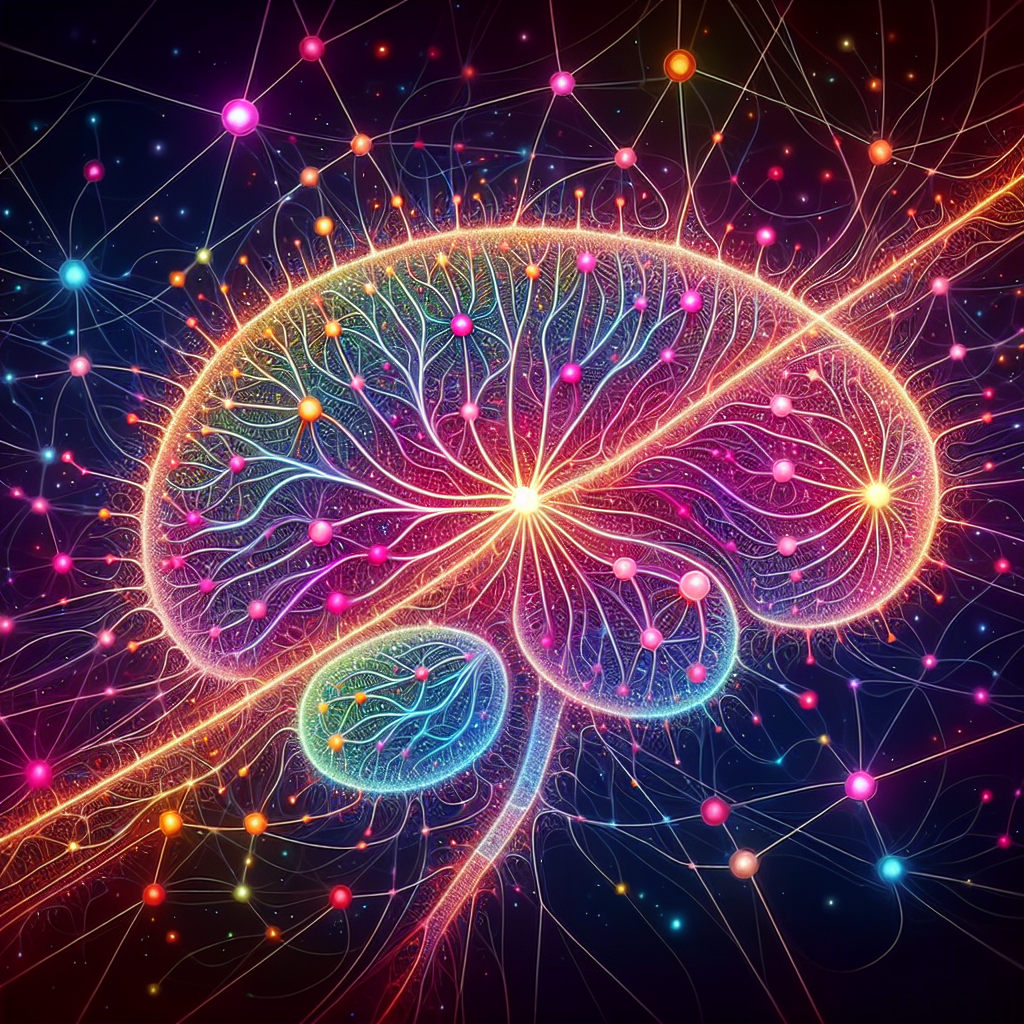Scientists have made an exciting discovery by studying a fly’s brain. The fly’s brain has over 130,000 cells and 50 million connections. Researchers from Cambridge have mapped out every cell in the fly’s brain. This helps them learn how brains, including human brains, work.
The study showed how different parts of the fly’s brain are connected. These parts help with things like moving and seeing. Understanding these connections can help scientists learn about healthy brains and brain problems. This research could help us understand bigger brains, like those of mice and humans, in the future.
To make the brain map, scientists cut the fly’s brain into 7,000 tiny pieces. They took pictures of each piece and put them back together on a computer. They used computers to help, but still had to fix many mistakes by hand. Now, other scientists can use this map to make new discoveries about the brain.
Original news source: Fly brain breakthrough ‘huge leap’ to unlock human mind (BBC)
🎧 Listen:
Slow
Normal
Fast
📖 Vocabulary:
| 1 | discovery | Finding something new or important |
| 2 | connections | Links or joins between things |
| 3 | researchers | People who study and learn about things |
| 4 | mapped | Made a plan or drawing of something |
| 5 | understanding | Knowing how something works |
| 6 | healthy | In good condition, not sick |
| 7 | problems | Things that go wrong or cause trouble |
| 8 | future | Time that has not happened yet |
| 9 | pieces | Small parts of something bigger |
| 10 | pictures | Images or photos |
| 11 | computer | A machine that helps with tasks |
| 12 | discoveries | New things that are found out or learned |
Group or Classroom Activities
Warm-up Activities:
– Charades
Instructions: Divide the class into two teams. Write down vocabulary words related to the article on small pieces of paper. One student from each team will come to the front of the class and choose a piece of paper with a word. They must then act out the word without speaking while their team tries to guess what it is.
– News Summary
Instructions: In pairs, have students summarize the article in their own words. Encourage them to include the main points and key information. After a few minutes, ask some pairs to share their summaries with the class.
– Opinion Poll
Instructions: Write a discussion question related to the article on the board, such as “Do you think studying the fly’s brain can help us understand human brains better?” Have students move to different corners of the room to indicate their opinion: strongly agree, agree, disagree, strongly disagree. Allow a few students from each group to explain their reasoning.
– Vocabulary Pictionary
Instructions: Write down key vocabulary words from the article on separate pieces of paper. Have one student come to the front of the class, pick a word, and draw it on the board without using any letters or numbers. Their classmates must guess the word. Rotate turns so that each student has a chance to draw.
– Think-Pair-Share
Instructions: Ask students to think about and write down one question they have about the article. Then, have them pair up with a classmate and discuss their questions. After a few minutes, open the discussion to the whole class and allow students to share their questions and thoughts.
🤔 Comprehension Questions:
1. What did scientists discover by studying a fly’s brain?
2. How many cells does a fly’s brain have?
3. What did researchers from Cambridge do to map out every cell in the fly’s brain?
4. What can understanding the connections in a fly’s brain help scientists learn about?
5. How did scientists make the brain map of the fly?
6. Why did scientists have to fix many mistakes by hand when making the brain map?
7. How can other scientists use the brain map to make new discoveries about the brain?
Go to answers ⇩
🎧✍️ Listen and Fill in the Gaps:
Scientists have made an exciting discovery by studying a fly’s brain. The fly’s brain has over 130,000 cells and 50 million connections. (1)______ from (2)______ have (3)______ out every cell in the fly’s brain. This helps them learn how brains, including (4)______ brains, work.
The study showed how different parts of the fly’s brain are connected. These parts help with things like moving and (5)______. Understanding these (6)______ can help scientists learn about (7)______ brains and brain (8)______. This research could help us understand bigger brains, like those of mice and (9)______, in the future.
To make the brain map, scientists cut the fly’s brain into 7,000 tiny pieces. They took pictures of each piece and put them back together on a computer. They (10)______ computers to help, but still had to fix many mistakes by hand. Now, other (11)______ can use this map to make new (12)______ about the brain.
Go to answers ⇩
💬 Discussion Questions:
Students can ask a partner these questions, or discuss them as a group.
1. What do you think it would be like to have over 130,000 cells in your brain?
2. How would you feel if scientists studied your brain like they studied the fly’s brain?
3. Do you like learning about how brains work? Why or why not?
4. What is something you think scientists could learn from studying the connections in the fly’s brain?
5. How do you think cutting the fly’s brain into tiny pieces helped the scientists make a map?
6. Do you think it’s important for scientists to understand how our brains work? Why or why not?
7. What do you think would be the hardest part of mapping out a brain like the scientists did with the fly’s brain?
8. How do you think computers helped the scientists in making the brain map?
9. Why do you think it’s helpful for other scientists to be able to use the brain map for new discoveries?
10. Do you think studying a fly’s brain can really help us understand bigger brains like those of mice and humans? Why or why not?
11. How important do you think it is to learn about brain problems and how to solve them?
12. What is something you would like to learn about brains in the future?
Individual Activities
📖💭 Vocabulary Meanings:
Match each word to its meaning.
Words:
1. discovery
2. connections
3. researchers
4. mapped
5. understanding
6. healthy
7. problems
8. future
9. pieces
10. pictures
11. computer
12. discoveries
Meanings:
(A) A machine that helps with tasks
(B) People who study and learn about things
(C) Knowing how something works
(D) Finding something new or important
(E) Small parts of something bigger
(F) Links or joins between things
(G) Images or photos
(H) Things that go wrong or cause trouble
(I) In good condition, not sick
(J) New things that are found out or learned
(K) Made a plan or drawing of something
(L) Time that has not happened yet
Go to answers ⇩
🔡 Multiple Choice Questions:
1. How many cells are there in a fly’s brain?
(a) Over 130,000
(b) 50 million
(c) 7,000
(d) 100,000
2. What did researchers from Cambridge do with the fly’s brain?
(a) Mapped out every cell
(b) Cut it into 50 pieces
(c) Threw it away
(d) Ate it
3. What can studying the fly’s brain help scientists learn about?
(a) How to cook
(b) How brains work
(c) How to fly
(d) How to swim
4. How did scientists make the brain map?
(a) Took pictures of the sky
(b) Used magic
(c) Asked the fly for help
(d) Cut the brain into tiny pieces
5. What did researchers use to put the pictures of the brain pieces back together?
(a) Cameras
(b) Scissors
(c) Computers
(d) Paint
6. How many connections are there in a fly’s brain?
(a) 7,000
(b) 130,000
(c) 50 million
(d) 100,000
7. What can scientists learn from understanding the connections in the fly’s brain?
(a) How to bake a cake
(b) How to dance
(c) How to fix a car
(d) About healthy brains and brain problems
8. Why is the brain map important for other scientists?
(a) To learn how to fly
(b) To make new discoveries about the brain
(c) To learn how to swim
(d) To learn how to cook
Go to answers ⇩
🕵️ True or False Questions:
1. The research could help us understand bigger brains, like those of mice and humans.
2. They took pictures of each piece and put them back together on a computer.
3. Scientists studied a fly’s brain and found it has few cells and connections.
4. Different parts of the fly’s brain help with moving and seeing.
5. Understanding these disconnections can help scientists learn about healthy brains and brain problems.
6. Researchers from Cambridge mapped out every cell in the fly’s brain.
7. Scientists enlarged the fly’s brain to make a brain map.
8. Other scientists can never use this map to make new discoveries about the brain.
Go to answers ⇩
📝 Write a Summary:
Write a summary of this news article in two sentences.
Check your writing now with the best free AI for English writing!
Writing Questions:
Answer the following questions. Write as much as you can for each answer.
Check your answers with our free English writing assistant!
1. What did scientists discover by studying a fly’s brain?
2. How many cells does a fly’s brain have?
3. How did researchers from Cambridge map out every cell in the fly’s brain?
4. Why is it important for scientists to understand how different parts of the fly’s brain are connected?
5. How can other scientists use the brain map created by the researchers?
✅ Answers
🤔✅ Comprehension Question Answers:
1. What did scientists discover by studying a fly’s brain?
Scientists discovered how different parts of the fly’s brain are connected.
2. How many cells does a fly’s brain have?
A fly’s brain has over 130,000 cells.
3. What did researchers from Cambridge do to map out every cell in the fly’s brain?
They cut the fly’s brain into tiny pieces, took pictures of each piece, and put them back together on a computer.
4. What can understanding the connections in a fly’s brain help scientists learn about?
Understanding the connections in a fly’s brain can help scientists learn about healthy brains and brain problems.
5. How did scientists make the brain map of the fly?
Scientists made the brain map by cutting the fly’s brain into tiny pieces, taking pictures of each piece, and putting them back together on a computer.
6. Why did scientists have to fix many mistakes by hand when making the brain map?
Scientists had to fix many mistakes by hand because even though they used computers to help, there were still errors that needed to be corrected.
7. How can other scientists use the brain map to make new discoveries about the brain?
Other scientists can use the brain map to study and learn more about how brains work and make new discoveries in brain research.
Go back to questions ⇧
🎧✍️✅ Listen and Fill in the Gaps Answers:
(1) Researchers
(2) Cambridge
(3) mapped
(4) human
(5) seeing
(6) connections
(7) healthy
(8) problems
(9) humans
(10) used
(11) scientists
(12) discoveries
Go back to questions ⇧
📖💭✅ Vocabulary Meanings Answers:
1. discovery
Answer: (D) Finding something new or important
2. connections
Answer: (F) Links or joins between things
3. researchers
Answer: (B) People who study and learn about things
4. mapped
Answer: (K) Made a plan or drawing of something
5. understanding
Answer: (C) Knowing how something works
6. healthy
Answer: (I) In good condition, not sick
7. problems
Answer: (H) Things that go wrong or cause trouble
8. future
Answer: (L) Time that has not happened yet
9. pieces
Answer: (E) Small parts of something bigger
10. pictures
Answer: (G) Images or photos
11. computer
Answer: (A) A machine that helps with tasks
12. discoveries
Answer: (J) New things that are found out or learned
Go back to questions ⇧
🔡✅ Multiple Choice Answers:
1. How many cells are there in a fly’s brain?
Answer: (a) Over 130,000
2. What did researchers from Cambridge do with the fly’s brain?
Answer: (a) Mapped out every cell
3. What can studying the fly’s brain help scientists learn about?
Answer: (b) How brains work
4. How did scientists make the brain map?
Answer: (d) Cut the brain into tiny pieces
5. What did researchers use to put the pictures of the brain pieces back together?
Answer: (c) Computers
6. How many connections are there in a fly’s brain?
Answer: (c) 50 million
7. What can scientists learn from understanding the connections in the fly’s brain?
Answer: (d) About healthy brains and brain problems
8. Why is the brain map important for other scientists?
Answer: (b) To make new discoveries about the brain
Go back to questions ⇧
🕵️✅ True or False Answers:
1. The research could help us understand bigger brains, like those of mice and humans. (Answer: True)
2. They took pictures of each piece and put them back together on a computer. (Answer: True)
3. Scientists studied a fly’s brain and found it has few cells and connections. (Answer: False)
4. Different parts of the fly’s brain help with moving and seeing. (Answer: True)
5. Understanding these disconnections can help scientists learn about healthy brains and brain problems. (Answer: False)
6. Researchers from Cambridge mapped out every cell in the fly’s brain. (Answer: True)
7. Scientists enlarged the fly’s brain to make a brain map. (Answer: False)
8. Other scientists can never use this map to make new discoveries about the brain. (Answer: False)
Go back to questions ⇧












